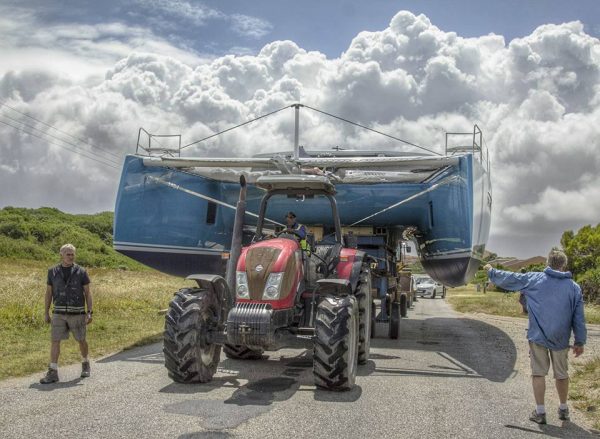Story by TMC Editor / May 11, 2017


1. When preparing a vessel for the approach of a tropical wave, depression, tropical storm or hurricane, be sure to close all seacocks, except the cockpit scupper seacocks. Leave the cockpit scuppers open to allow rain water and sea spray to drain out of the cockpit.
During one tropical storm, a large sailboat was blown onto soft sand in shoal water and would have suffered minimal damage. However, since the galley and head sink seacocks were left open, seawater flooded the vessel while the yacht was careened on its side. The interior was partially filled with seawater, causing damage to the engine, refrigeration, electrical systems and cabinetry. It was an unnecessary loss.
2. If you have the time when preparing for the arrival of a hurricane or tropical storm, consider removing your vessel’s lifelines and the vertical pieces of your two piece stanchions (base & vertical) from their bases along the gunwale of your sailboat.
If you are ashore in a safe haven, you will not need the lifelines and stanchions to hold on to during the storm. If they are removed that will keep them undamaged and they cannot engage stanchions or lifelines on a neighboring boat and cause unneeded damage.

3. If you are securing your sailboat alongside other sailboats in a rafting or marina setting, stagger the adjacent sailboats so that the mast, spreaders and standing rigging of your boat will not engage the neighboring boats.
During a storm, the wind and waves will hit each boat at a different time and each boat will respond and roll differently. If your masts are adjacent to one another there is a strong chance that they will catch on one another, causing unneeded damage. Move your boat fore or aft to keep the spars and rigging apart.
4. Boat/US has done research showing that polyester (Dacron) dock lines resist chafe much better than nylon. In fact, they have conducted experiments that showed that nylon anchor or dock lines would melt when mounted within rubber hose or tubing chafe gear! Apparently, the friction between the strands of the stretchy nylon line created so much that that the nylon line was able to part.
The recommendation from Boat/US is to use polyester lines at chafe points. Make a short polyester pennant that passes over the bow chock or by the bobstay to use between the bow anchor and the stretching behavior. Use the polyester line at the chafe points.
Was a pleasure working with Andrew Hodgdon as buyers agent for our recent multihull purchase. Very knowledgeable of this space and for sure my first call buying or selling a yacht.
The multihull company has been great to work with. They were very helpful in every stage of our purchase from instill showings to purchase. Karl Reed, Andrew Hodgon and Andrew Holland were great sources of information and helped us find our dream Catamaran. Thank you Multihull!
Sold my L42 here with the excellent help and support of TMCs Croatia sales manager “Zee”. Despite my boat docked on the dry in Montenegro, in winter and in a challenging market, TMC and Zee managed to get her sold, managing the entire process from taking pictures and video’s, putting her out there on the web, prepping her and managing all for inspections….down to the final hand-over documents and managing the escrow payments when all boxes were ticked! Very professional, very helpful (Zee went above and beyond to make sure he delivers excellent service), responsive and successful. Thanks TMC!
We purchased our lagoon 410 through the multihull company, Andrew Hodgdon was the listing’s broker. From the start till the end of the process he was upfront honest and accommodating. Our situation was unique and required a bit more leg work. Andrew was always easy to get a hold of and willing to help. It was a pleasure working with a highly knowledgeable broker that values integrity. I highly recommend him.
Successful relationships cannot exist without it. At The Multihull Company we base every relationship on a firm commitment to earning and retaining our client’s trust.
Advice of any kind is valuable only when grounded in hard-won expertise. It too, must be trustworthy. Trust and expertise define the heart and soul of The Multihull Company. We are a team of skilled professionals who thrive on providing expert, trustworthy advice and service to catamaran and trimaran sailors around the globe.
Read More